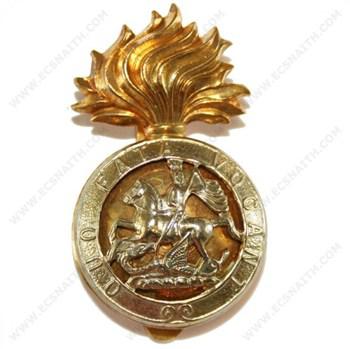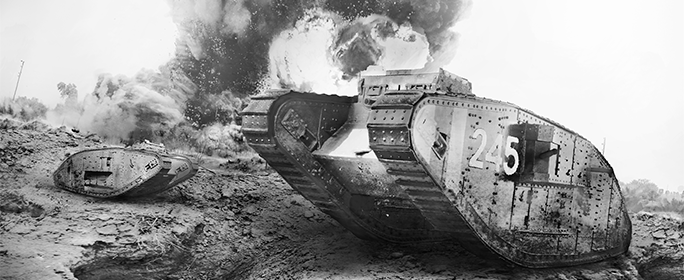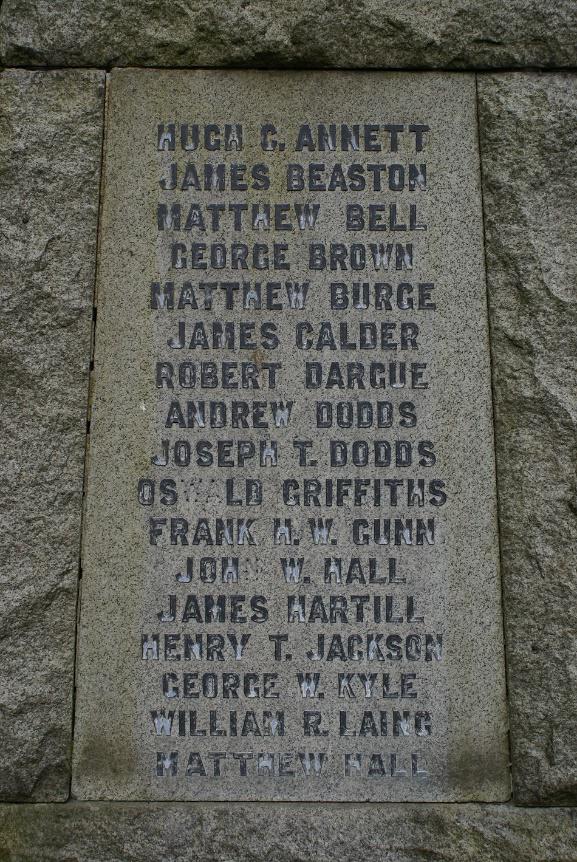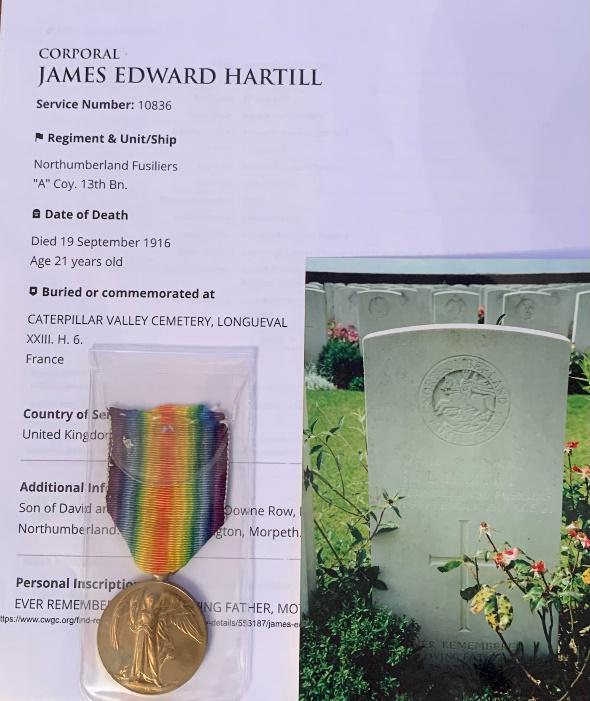
James Edward Hartill was born at Back Lane, Ossett on 16th August 1895 the eldest child of Earlsheaton coal miner David and Ossett born Mary Hartill (nee Hepworth) who married at Ossett Holy Trinity Church on 24th February 1894. The couple settled at Back Lane and had their only daughter there in August 1897. In 1899 the family moved to Northumberland and had another six sons, all but one of whom would have been too young to serve in the first war. The family is recorded in Northumberland between 1901 and 1921.
As it once was Back Lane looking towards Dearden Street
James Edward Hartill would be twelve days short of his 19th birthday when Great Britain declared war on the German Empire; as such he was old enough to enlist and almost old enough to serve overseas. By 1911 he was living with his parents and siblings in Northumberland and working as a pony driver at the local pit. Even though his place of birth on his birth certificate was Ossett, the 1911 Census stated it to be Soothill; sufficient evidence to the researcher to be cautious about birth places in Censuses. James Edward’s mother gave birth to ten children, three of whom sadly died in infancy. She may be forgiven for forgetting his and his sister’s place of birth.
James’ Edward’s army service papers have not survived having been culled to some extent by the War Office in the 1920’s but more effectively by a Luftwaffe attack on London in 1941, where they were stored and largely destroyed. It is not possible therefore to determine, with any great certainty, the date of his enlistment but it is known that, even as a miner, he was a volunteer.
It is also known that he was in France by early September 1915 and he could have been in training for twelve months before that. This would coincide with the formation in Newcastle in September 1914 of the 13th battalion, Northumberland Fusiliers Regiment to which he was allotted. This was part of Kitchener’s New Army and came under the orders of 62nd Brigade, 21st Division
So it was then that on 9th September 1915, shortly after his 20th birthday, Private James Edward Hartill embarked at Folkestone and disembarked on 10th September at Boulogne, France with his 13th battalion Northumberland Fusiliers accompanied by the 12th and 14th battalions. The 12th and 13th came under the orders of the 62nd Brigade, 21st Division whilst the 14th was converted to a Pioneer battalion under the direct orders of the21st Division.
 The Northumberland Fusiliers’ Insignia
The Northumberland Fusiliers’ Insignia
In May 1915 James Edward would be with the 21st Division infantry in huts at Halton Park, Buckinghamshire. Rifles were received in late June 1915 and after firing their first course the infantry moved from 9 August to Witley Camp in Surrey. Lord Kitchener inspected the Division on the march on 12 August, four days before James Edwards, 20th birthday. Having completed its training, towards the end of August 1915, the 21st Division received orders that it was to move to France. Advance parties left on 2nd September, the troops began to entrain on 7th September, and by 13th September the Division had concentrated in the Tilques area.
James Edward’s first experience was truly appalling. The Battle of the Loos was the largest British offensive on the Western Front to date and part of another Franco-British attempt to destroy the stalemate of trench warfare and break through the German lines. The battle witnessed the first British use of poison gas and the first engagement of large numbers of troops from Kitchener’s New Army. Joffre the French Commander in Chief wanted to take Vimy Ridge; British forces would attack the industrial area around Loos and Lens with six full divisions being sent into battle. The 21st Division suffered over 3,800 casualties for very little gain. The Division took the rest of the year to rebuild.
In 1916 James Edward Hartill and his 13th Battalion, Northumberland Fusiliers saw action on The Somme in The Battle of Albert (1st July), The Battle of Bazentin Ridge (14th July) and fatefully for him The Battle of Flers-Courcelette which began on 17th September 1916.
In September 1916, the French villages of Flers and Courcelette witnessed a momentous event – it was the very first time in history of warfare that tanks were used in combat. The idea to develop armoured combat vehicles, or ‘land battleships’ as it were, came as a response to the rigid World War I reality of trench warfare. The British Landships Committee wanted a vehicle capable of breaking through fortified positions and trenches, thus breaking the stalemate situation prevalent on the battlefields of World War I. The outcome of the development process initiated in the summer of 1915 was the Gun Carrier Mark I. This battle saw the first use of massed tanks as an offensive weapon.

Tanks in use at the The Battle of Flers-Courcelette 17th-22nd September 1916.
Even though the plans were to utilise the tanks in a mass scale attack on the opening day of the Battle of Somme, the manufacturers were not able to prepare the required number of vehicles in time. As a result, the unleashing of this new weapon had to be postponed for an additional 10 weeks. On 15th September 1916, the decision was made to use the total of 49 available vehicles in a combined attack with infantry and artillery in an attempt to break the German defence lines. Even though no breakthrough had been achieved, the operation resulted in the capture of the villages of Courcelette, Martinpuich and Flers, and pushed the frontline forward by over 2,300 metres.
This then was the battle of Flers – Courcelette. After the failure of the major Somme Offensive or ‘Big Push’ on 1st July, Haig wanted a breakthrough by mid-September and before the onset of winter. An attack was planned to involve 11 Divisions of infantry and mounted cavalry, supported by tanks and artillery across a 12,000 yards front, from Courcelette in the north to Lesboeufs and Morval in the south.
21st Division were in reserve during the opening of the battle with the 64th Brigade moving forward on 16th September to assist the 41st Division to continue their attack but suffered heavy casualties from artillery and machine-gun fire before they had reached their start point, the attackers were unable to reach the first objective before falling back. The 13th Battalion occupied the front line east of Flers and on each day of the battle the Allied Front Line and Support Line were shelled throughout with enemy snipers very active and barrages of artillery behind the Allied Lines. A signal of the damage done was that the Commonwealth War Graves Commission report his loss on the 19th or 22nd September 1916 and the subsequent Pension Card records his death as 16th/22nd September 1916.
Corporal James Edward Hartill was killed in action in the Battle of Flers – Courcelette in September 1916 and is remembered at Caterpillar Valley Cemetery, Longueval at Grave XXIII.H.6.
Caterpillar Valley was the long valley running West to East, past “Caterpillar Wood”, to the high ground at Guillemont. Longueval village is on the Northern crest of this valley and West of the village, on the South side of the road to Contalmaison, is Caterpillar Valley Cemetery. The Valley was captured during nighton Bazentin Ridge on 14 July 1916. It was lost in the German advance of March 1918 and recovered by the 38th (Welsh) Division on 28 August 1918, when a little cemetery was made (now Plot 1 of this cemetery) containing 25 graves of the 38th Division and the 6th Dragoon Guards. After the Armistice, this cemetery was hugely increased when the graves of more than 5,500 officers and men were brought from other small cemeteries, and the battlefields of the Somme. The majority of these soldiers died in autumn 1916 and almost all the rest in August/September 1918.
Corporal James Edward Hartill was posthumously awarded the British and Victory Medals and also the 1914-1915 Star for his service overseas in a theatre of war on or before 31st December 1915. He was just 21 years age. He is also remembered at the Grade II Listed Memorial at Widdrington (below), the Northumberland village which was home before he went to war.


Thanks to Andrea Hartley for re-uniting James Edward Hartill and Ossett with his Victory Medal(below); one of the three service medals awarded posthumously to James in the early 1920’s.


Right; the edge of the Victory Medal recording Northumberland Fusiliers, 10836, Pte J.E. HARTILL
In 2022 James E. Hartill will be remembered at the Ossett War Memorial in the Market Place where his name will be inscribed alongside his brothers and sisters in arms; the Ossett Fallen.
Sources
Commonwealth War Graves Commission